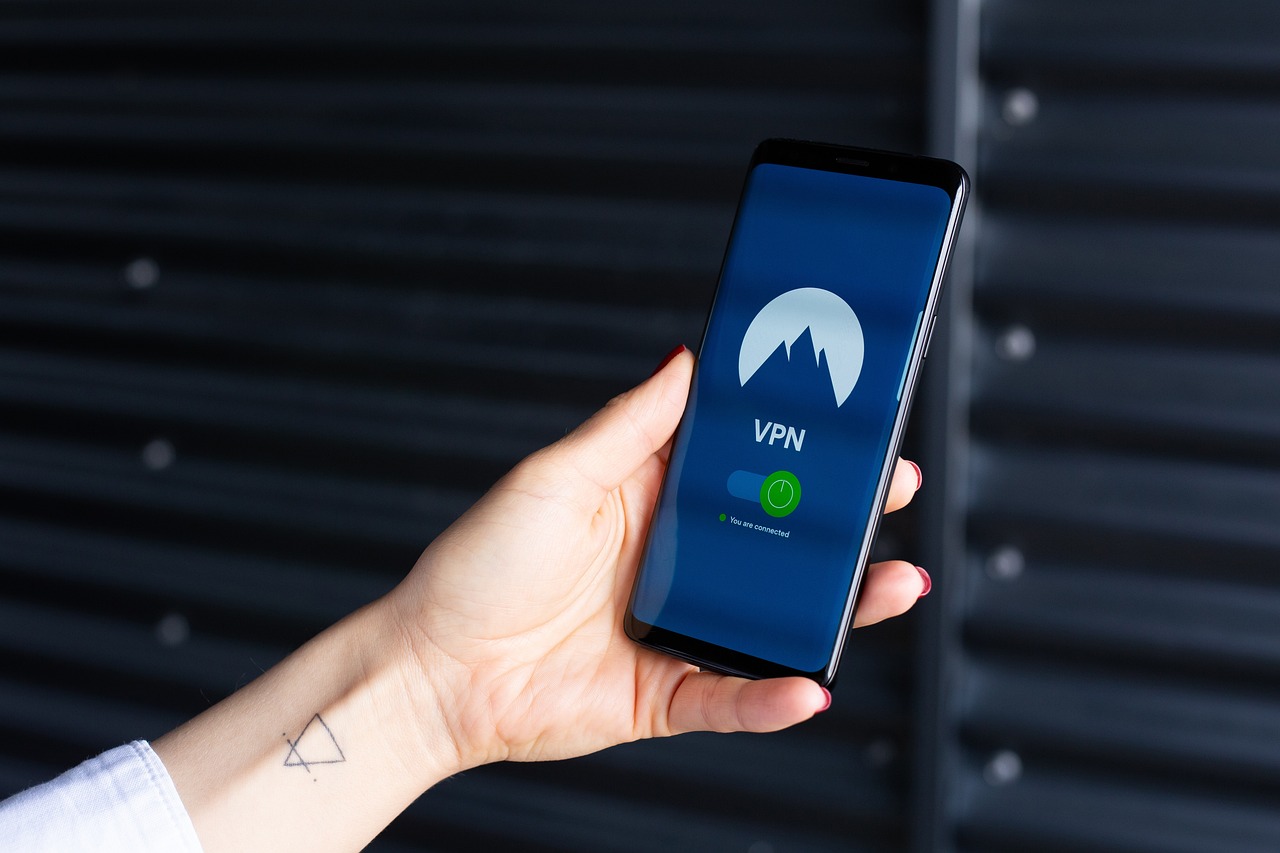How to Protect Your Home From Cyber Attacks
In today's digital age, protecting your home from cyber attacks has become more crucial than ever. With the rise of smart home devices and the increasing amount of personal information stored online, cybercriminals are constantly looking for vulnerabilities to exploit. This article explores essential strategies and best practices to safeguard your home network and personal devices against the rising threat of cyber attacks. Learn how to enhance your digital security effectively and keep your information safe from prying eyes.
To effectively protect your home, it’s essential to understand the types of cyber threats that can target your network. Common threats include malware, which can infiltrate your devices and compromise your data; phishing, where attackers trick you into revealing sensitive information; and ransomware, which locks you out of your files until a ransom is paid. Recognizing these threats is the first step in creating a robust defense strategy. Imagine your home as a castle; if you don’t know where the enemies are lurking, how can you build the right defenses?
Your home Wi-Fi network is often the first line of defense against cyber threats. Securing it is paramount to protecting your data. Start by changing default settings on your router, as these are often easily accessible to hackers. Use strong passwords that include a mix of letters, numbers, and symbols to prevent unauthorized access. Enabling encryption on your network is also vital; it scrambles your data, making it unreadable to anyone who tries to intercept it. Think of your Wi-Fi network as a secure vault—if the door is weak, anyone can walk in!
Creating a strong password is like locking the door to your home. It’s your first line of defense against intruders. Best practices for strong passwords include:
- Using at least 12 characters
- Incorporating a mix of uppercase and lowercase letters
- Adding numbers and special characters
- Avoiding easily guessable information like birthdays or names
By following these guidelines, you can significantly minimize the risk of unauthorized access to your network and devices.
Password managers are fantastic tools that can help you generate and store complex passwords securely. They take the hassle out of remembering multiple passwords and reduce the likelihood of using weak or repeated passwords across different accounts. Imagine having a personal assistant who not only creates strong passwords for you but also remembers them all—sounds great, right?
In addition to creating strong passwords, it’s crucial to update them regularly. Just like you wouldn’t keep the same key to your house forever, you shouldn’t rely on the same passwords indefinitely. Regular updates help to enhance security and mitigate risks associated with potential data breaches or unauthorized access. Set a reminder to change your passwords every few months to stay one step ahead of cybercriminals.
Network encryption is another critical aspect of securing your Wi-Fi. Different types of encryption, such as WPA3, offer varying levels of security. Enabling these settings can protect your data from eavesdropping and unauthorized access. Think of encryption as a secret language that only you and your devices understand—this way, even if someone intercepts your data, they won’t be able to make sense of it.
Securing individual devices in your home—like computers, smartphones, and smart home devices—is vital for reducing vulnerabilities. Each device can be a potential entry point for cybercriminals. Start by installing antivirus software on all your devices. This software acts as a shield, protecting you from malware and viruses that could compromise your data. Additionally, keeping your software updated is crucial; updates often include patches for security vulnerabilities that hackers could exploit.
When selecting antivirus software, look for solutions that offer real-time protection, regular updates, and comprehensive scanning capabilities. Just like a good security system for your home, effective antivirus software monitors for threats and neutralizes them before they can do any damage. Regularly check for updates to ensure your defenses are always up to date.
In our fast-paced digital world, software updates are essential. They often include important security patches that protect against emerging cyber threats. Make it a habit to check for updates for your operating system, applications, and devices regularly. Think of it as maintaining your car; just as you wouldn’t drive a vehicle with outdated parts, you shouldn’t use devices with outdated software.
Creating a safer home environment goes beyond just technology; it involves educating all household members about cybersecurity practices. Teach them how to recognize phishing attempts, practice safe browsing habits, and the importance of not sharing personal information online. By fostering a culture of awareness and vigilance, you can significantly reduce the likelihood of a successful cyber attack.
Monitoring your home network for unusual activity is essential for early detection of potential breaches. Utilize tools and software that can help you identify unauthorized access or suspicious behavior. Just like a good neighborhood watch program, keeping an eye on your network can help you respond quickly to mitigate risks.
If you suspect a cyber attack, it’s crucial to act swiftly. Start by isolating affected devices to prevent further spread of the attack. Report the incident to your internet service provider and consider restoring your data from a backup. Quick action can significantly minimize the damage and help you recover faster from potential breaches.
Q: What are the most common types of cyber attacks on home networks?
A: The most common types include malware, phishing, and ransomware attacks.
Q: How often should I change my Wi-Fi password?
A: It’s recommended to change your Wi-Fi password every few months to enhance security.
Q: What is the best way to secure my smart home devices?
A: Ensure they are connected to a secure Wi-Fi network, regularly updated, and protected with strong passwords.
Q: How can I monitor my home network for unusual activity?
A: Use network monitoring tools that can alert you to unauthorized access or suspicious behavior.

Understanding Cyber Threats
This article explores essential strategies and best practices to safeguard your home network and personal devices against the rising threat of cyber attacks. Learn how to enhance your digital security effectively.
In today's digital age, understanding cyber threats is crucial for every household. The internet, while a fantastic resource, can also be a breeding ground for malicious activities. Cyber threats come in various forms, each with its own implications for personal security. By recognizing these threats, you can take proactive measures to protect your home network and devices.
One of the most common types of cyber threats is malware. This term encompasses a range of malicious software designed to damage, disrupt, or gain unauthorized access to computer systems. Malware can hide in legitimate software or be delivered through deceptive emails and websites. Once activated, it can steal sensitive information, corrupt files, or even take control of your device.
Another prevalent threat is phishing, a tactic where attackers impersonate trustworthy entities to trick individuals into revealing personal information, such as passwords and credit card numbers. Phishing attempts often come in the form of emails or messages that appear legitimate but contain links to fake websites. Recognizing these scams is vital; always double-check the sender's email address and look for signs of suspicious activity.
Then there's ransomware, a particularly nasty type of malware that encrypts your files and demands payment for their release. Imagine waking up one day to find that all your important documents are locked away, and the only way to get them back is to pay a hefty ransom. This scenario is becoming increasingly common, and the emotional toll can be overwhelming.
To give you a clearer picture of these threats, here’s a table summarizing their key characteristics:
| Type of Cyber Threat | Description | Potential Impact |
|---|---|---|
| Malware | Malicious software that disrupts or damages systems | Data theft, system corruption, unauthorized access |
| Phishing | Fraudulent attempts to obtain sensitive information | Identity theft, financial loss, data breaches |
| Ransomware | Software that encrypts files and demands ransom | Loss of access to data, financial demands |
Understanding these threats is the first step in creating a robust defense for your home. By being aware of the tactics used by cybercriminals, you can better prepare yourself and your family. Remember, the goal is to make your home a hard target for cyber attackers. Stay informed and vigilant, and you'll be well on your way to enhancing your digital security.
Learn the importance of securing your home Wi-Fi network, including tips on changing default settings, using strong passwords, and enabling encryption to prevent unauthorized access and protect your data.
Discover best practices for creating strong, unique passwords for your Wi-Fi network and devices, minimizing the risk of unauthorized access and ensuring your personal information remains safe.
Explore how password managers can help you generate and store complex passwords securely, reducing the likelihood of using weak or repeated passwords across different accounts and devices.
Understand the significance of regularly updating your passwords to enhance security and mitigate risks associated with potential data breaches or unauthorized access.
This section explains different types of network encryption, such as WPA3, and how enabling these settings can protect your data from eavesdropping and unauthorized access.
Learn how to secure individual devices in your home, including computers, smartphones, and smart home devices, to reduce vulnerabilities and enhance overall cybersecurity.
Discover the importance of antivirus software in protecting your devices from malware and viruses, along with tips on selecting and maintaining effective antivirus solutions.
Understand the necessity of regularly updating your device software and applications to patch vulnerabilities and protect against emerging cyber threats effectively.
This section emphasizes the importance of educating all household members about cybersecurity practices, including recognizing phishing attempts and safe browsing habits, to create a safer home environment.
Learn how to monitor your home network for unusual activity, including using tools and software to detect potential breaches and respond quickly to mitigate risks.
This section outlines steps to take if you suspect a cyber attack, including isolating affected devices, reporting incidents, and restoring data to ensure a swift recovery from potential breaches.
Here are some common questions about protecting your home from cyber attacks:
- What should I do if I suspect a cyber attack? Isolate affected devices, report the incident, and restore any lost data.
- How often should I update my passwords? It's recommended to update passwords every three to six months.
- What is the best way to educate my family about cyber threats? Discuss common threats regularly and encourage safe online practices.

Securing Your Wi-Fi Network
In today's digital age, securing your home Wi-Fi network is more critical than ever. Think of your Wi-Fi as the front door to your home; if it’s left unlocked, anyone can walk in. Cybercriminals are constantly on the lookout for vulnerable networks to exploit, and an unsecured Wi-Fi connection can lead to unauthorized access to your personal data, identity theft, and even financial loss. So, what can you do to fortify your digital fortress?
First and foremost, it’s essential to change the default settings of your router. Many people overlook this step, but using the factory settings makes it incredibly easy for hackers to gain access. By changing your router's default username and password, you create an initial barrier. A strong password should be at least 12 characters long, combining letters, numbers, and special symbols. The more complex, the better!
Next, enabling encryption is a must. Most modern routers come with several encryption options, but the best choice is usually WPA3, which offers enhanced security features compared to its predecessors. This encryption method scrambles the data transmitted over your network, making it nearly impossible for anyone to intercept your information. To enable encryption, log in to your router’s settings and look for the security options. Select WPA3, save the changes, and voilà—you’re one step closer to securing your network!
Now that you’ve changed your default settings and enabled encryption, let’s talk about passwords. A strong password is your first line of defense against cyber attacks. Here are some tips for crafting a robust password:
- Use a mix of uppercase and lowercase letters.
- Incorporate numbers and special characters.
- Avoid using easily guessable information, like birthdays or names.
By following these guidelines, you’ll significantly reduce the risk of unauthorized access to your network.
If you find it challenging to remember complex passwords, consider using a password manager. These tools can generate and store strong passwords for you, ensuring that you never have to reuse weak passwords across different accounts. With a password manager, you can keep your digital life organized and secure without the hassle of remembering every single password.
Another effective strategy is to update your passwords regularly. Think of it as changing the locks on your front door every so often. By changing your Wi-Fi password every few months, you can mitigate risks associated with potential data breaches. It’s a simple yet effective way to ensure that even if someone has gained access, they won’t be able to linger for long.
As mentioned earlier, enabling network encryption is crucial for protecting your data. Here’s a quick comparison of the most common types of Wi-Fi encryption:
| Encryption Type | Security Level | Notes |
|---|---|---|
| WEP | Weak | Outdated and easily cracked; not recommended. |
| WPA | Moderate | Better than WEP but still vulnerable; use only if WPA2 or WPA3 is unavailable. |
| WPA2 | Strong | Widely used and secure; a solid choice for most users. |
| WPA3 | Very Strong | Latest standard; offers enhanced security features. |
By enabling WPA3, you can ensure that your data is well-protected from eavesdropping and unauthorized access. Always keep your router’s firmware updated as well, as manufacturers regularly release updates to patch security vulnerabilities.
Finally, don’t forget to monitor your network for any unusual activity. Many routers offer tools to help you see which devices are connected. If you notice any unfamiliar devices, it’s time to take action—change your password immediately and consider enabling MAC address filtering to restrict access to only your devices.

Choosing a Strong Password
When it comes to safeguarding your digital life, is like fortifying the gates of your castle. Think of your password as the key that unlocks the door to your personal information. If that key is weak or easily guessable, intruders can waltz right in without breaking a sweat. So, how do you create a password that stands the test of time and keeps the cyber villains at bay?
First off, a strong password should be at least 12 characters long. The longer your password, the more difficult it becomes to crack. Combine upper and lower case letters, numbers, and special characters to create a complex mix. For example, instead of using something like "password123," try something more imaginative like "Giraffe!Dances@Midnight42!" This not only makes it harder for hackers to guess but also makes it memorable for you.
Another crucial aspect is avoiding common words or easily accessible information. Using your name, birthdate, or pet's name might be convenient, but it also makes you an easy target. Instead, consider using a passphrase—a series of random words strung together. For instance, "PurpleElephant!SkyDiving$2023" is both memorable and secure. You can even use a phrase from a favorite song or quote, adding numbers and symbols to spice it up.
And let's not forget about unique passwords. It’s essential to have different passwords for different accounts. Imagine using the same key for your house, car, and safe. If a thief gets hold of that key, they can access everything! To keep your accounts safe, consider using a password manager. These handy tools can generate complex passwords for you and store them securely, so you don’t have to remember them all.
Lastly, make it a habit to change your passwords regularly. Just like you wouldn’t wear the same outfit every day, your passwords should evolve. Consider updating them every three to six months, especially if you hear about a data breach involving a service you use. This simple act can significantly reduce your risk of unauthorized access.
In summary, crafting a strong password is your first line of defense against cyber threats. By creating long, complex, and unique passwords, and updating them regularly, you can help ensure that your digital life remains secure. Remember, in the world of cybersecurity, a little effort goes a long way!
- How often should I change my passwords? It's recommended to change your passwords every three to six months.
- Can I use the same password for multiple accounts? No, using the same password increases your vulnerability. Each account should have a unique password.
- What is a password manager? A password manager is a tool that helps you generate and store complex passwords securely.
- How do I know if my password is strong enough? A strong password typically contains at least 12 characters, including a mix of letters, numbers, and symbols.

Using Password Managers
Password managers are like having a personal vault for your digital life. Think about it: we juggle countless online accounts, each requiring a unique password, and it can feel overwhelming. This is where a password manager steps in, acting as your digital superhero. By securely storing your passwords and even generating complex ones for you, these tools significantly reduce the risk of falling victim to cyber attacks.
One of the biggest advantages of using a password manager is that it encourages the use of strong and unique passwords for every account. Instead of relying on easily guessable passwords or recycling the same one across different sites, you can let the password manager create a random, complex password that’s hard to crack. Imagine trying to remember a password like "G7!jK#3zQ@x9," versus simply remembering a master password for your password manager! This not only enhances your security but also alleviates the mental burden of keeping track of all your credentials.
Furthermore, many password managers come with additional features that help bolster your online security. For instance, they often include:
- Two-Factor Authentication (2FA): Adding an extra layer of security by requiring a second form of verification.
- Password Sharing: Securely sharing passwords with trusted friends or family without revealing the actual password.
- Security Audits: Analyzing your stored passwords to identify weak or reused ones that need changing.
When choosing a password manager, it’s essential to consider factors like security features, ease of use, and platform compatibility. Many reputable password managers offer cross-platform support, ensuring that whether you’re on your computer, tablet, or smartphone, your passwords are accessible whenever you need them. Popular options include LastPass, 1Password, and Bitwarden, each offering unique features that cater to different user needs.
In conclusion, adopting a password manager can significantly enhance your cybersecurity strategy. By simplifying the process of managing your passwords, these tools not only save you time but also fortify your defenses against potential cyber threats. So, why not give yourself the peace of mind that comes with knowing your online accounts are protected by strong, unique passwords?
1. What is a password manager?
A password manager is a software application designed to store and manage your passwords securely, allowing you to generate and retrieve complex passwords easily.
2. Are password managers safe to use?
Yes, reputable password managers use strong encryption to protect your data, making them safer than storing passwords in a document or using the same password across multiple accounts.
3. Can I access my passwords on multiple devices?
Most password managers offer cross-platform support, allowing you to access your passwords on various devices, including smartphones, tablets, and computers.
4. Do I need to remember my passwords if I use a password manager?
No, you only need to remember the master password for your password manager. The manager will handle all your other passwords for you.
5. How often should I change my passwords?
It’s a good practice to change your passwords regularly, especially for sensitive accounts, and to update them if you suspect a breach.

Regularly Updating Passwords
In today's digital age, the importance of regularly updating your passwords cannot be overstated. Think of your passwords as the keys to your home; if you never change the locks, you're leaving your front door wide open for intruders. Cyber threats are constantly evolving, and so should your defenses. By routinely changing your passwords, you significantly reduce the risk of unauthorized access to your personal information.
But how often should you update your passwords? While there isn't a one-size-fits-all answer, a good rule of thumb is to change them every three to six months. Additionally, if you hear about a data breach involving a service you use, it’s crucial to change that password immediately. Remember, the longer you use the same password, the greater the chances that it could be compromised.
When updating your passwords, consider the following best practices to enhance your security:
- Avoid Common Passwords: Steer clear of easily guessable passwords like "123456" or "password." Instead, opt for a mix of letters, numbers, and symbols.
- Unique Passwords for Each Account: Using the same password across multiple accounts is like using the same key for your house, car, and safe. If one gets compromised, they all do!
- Use a Password Manager: These tools can help you generate and store complex passwords securely, so you don’t have to remember them all.
Ultimately, the goal is to make it as difficult as possible for cybercriminals to access your accounts. Regularly updating your passwords is a simple yet effective way to bolster your defenses. Think of it as a routine check-up for your digital health—just as you’d visit a doctor for a yearly physical, your digital security deserves the same attention. By staying proactive, you can keep your personal information safe and sound.
1. How often should I change my passwords?
It's recommended to change your passwords every three to six months. Additionally, change them immediately if you suspect a breach.
2. What makes a strong password?
A strong password typically includes a mix of uppercase and lowercase letters, numbers, and special characters, and is at least 12 characters long.
3. Should I use the same password for different accounts?
No, using unique passwords for each account is crucial. If one account is compromised, having different passwords protects your other accounts.
4. Can a password manager really keep my passwords safe?
Yes, password managers encrypt your passwords and can generate strong, unique passwords, making it easier to maintain good security practices.

Enabling Network Encryption
This article explores essential strategies and best practices to safeguard your home network and personal devices against the rising threat of cyber attacks. Learn how to enhance your digital security effectively.
This section provides an overview of common cyber threats that target home networks, including malware, phishing, and ransomware, helping you recognize potential dangers and their implications for personal security.
Learn the importance of securing your home Wi-Fi network, including tips on changing default settings, using strong passwords, and enabling encryption to prevent unauthorized access and protect your data.
Discover best practices for creating strong, unique passwords for your Wi-Fi network and devices, minimizing the risk of unauthorized access and ensuring your personal information remains safe.
Explore how password managers can help you generate and store complex passwords securely, reducing the likelihood of using weak or repeated passwords across different accounts and devices.
Understand the significance of regularly updating your passwords to enhance security and mitigate risks associated with potential data breaches or unauthorized access.
When it comes to securing your home network, enabling network encryption is one of the most crucial steps you can take. Think of encryption as a protective shield that keeps your data safe from prying eyes. Without it, your information travels through the air like an open book, easily readable by anyone within range. By enabling encryption, you transform your network into a secure fortress, making it significantly harder for cybercriminals to intercept your data.
There are various types of encryption protocols available, but the most commonly used ones for home networks are WPA2 and the newer WPA3. WPA3, in particular, offers enhanced security features, including better protection against brute-force attacks and improved security for open networks. To enable encryption, you will typically access your router's settings through a web browser. Here’s a quick overview of the steps involved:
- Connect to your router's network and open a web browser.
- Enter your router's IP address in the address bar (commonly 192.168.1.1 or 192.168.0.1).
- Log in with your admin credentials (default credentials can often be found on the router itself).
- Navigate to the wireless settings section.
- Select WPA2 or WPA3 from the security options.
- Save your changes and reboot the router if necessary.
After enabling encryption, it's essential to select a strong password for your Wi-Fi network. This password serves as the key to your fortress. Make it complex and unique, combining uppercase and lowercase letters, numbers, and special characters. The stronger your password, the harder it becomes for unauthorized users to gain access.
In addition to these steps, consider regularly updating your router’s firmware. Manufacturers often release updates that include security patches to protect against new vulnerabilities. Keeping your router's firmware up-to-date is like reinforcing your fortress walls against evolving threats.
Learn how to secure individual devices in your home, including computers, smartphones, and smart home devices, to reduce vulnerabilities and enhance overall cybersecurity.
Discover the importance of antivirus software in protecting your devices from malware and viruses, along with tips on selecting and maintaining effective antivirus solutions.
Understand the necessity of regularly updating your device software and applications to patch vulnerabilities and protect against emerging cyber threats effectively.
This section emphasizes the importance of educating all household members about cybersecurity practices, including recognizing phishing attempts and safe browsing habits, to create a safer home environment.
Learn how to monitor your home network for unusual activity, including using tools and software to detect potential breaches and respond quickly to mitigate risks.
This section outlines steps to take if you suspect a cyber attack, including isolating affected devices, reporting incidents, and restoring data to ensure a swift recovery from potential breaches.
- What is network encryption?
Network encryption is a security measure that encodes data transmitted over a network, making it unreadable to unauthorized users.
- How do I know if my network is encrypted?
You can check your router settings to see if WPA2 or WPA3 is enabled under the wireless security options.
- Is WPA3 better than WPA2?
Yes, WPA3 offers enhanced security features and is more resistant to attacks compared to WPA2.
- How often should I change my Wi-Fi password?
It's advisable to change your Wi-Fi password every few months or immediately if you suspect it may have been compromised.

Implementing Device Security
In today's digital age, securing your devices is as crucial as locking your front door. With the rise of smart technology, every gadget in your home, from your smartphone to your smart refrigerator, is a potential entry point for cybercriminals. It’s vital to take proactive steps to enhance the security of each device. Think of your devices as individual soldiers in the battle against cyber threats; if one is compromised, the entire fortress can fall. So, how do we fortify these soldiers?
First and foremost, installing antivirus software is non-negotiable. This software acts like a security guard, constantly monitoring your devices for any suspicious activity. When choosing antivirus solutions, look for those that offer real-time protection, regular updates, and comprehensive scanning features. Brands like Norton, McAfee, and Bitdefender have proven track records in this arena. Remember, a good antivirus program is your first line of defense against malware and other malicious attacks.
Next, keeping your software updated is essential. Just like you wouldn’t drive a car with outdated brakes, you shouldn’t run devices on old software. Software developers frequently release updates to patch vulnerabilities that hackers might exploit. Regularly check for updates on your operating system, applications, and firmware for your smart devices. Enabling automatic updates can save you from the hassle of remembering to do it manually.
Another crucial aspect of device security is using strong, unique passwords. Each device should have its own password, and these passwords should be complex—think of them as the keys to your digital kingdom. A good password is at least 12 characters long and includes a mix of letters, numbers, and symbols. Avoid using easily guessable information like birthdays or pet names. To make this task easier, consider using a password manager. These tools can generate and store complex passwords securely, ensuring you never have to rely on weak or repeated passwords across your devices.
Moreover, enabling two-factor authentication (2FA) wherever possible adds an extra layer of security. This means that even if someone manages to get your password, they won’t be able to access your accounts without a second form of verification, typically a code sent to your phone. It's like having a second lock on your door; it may take a bit more effort to get in, but it significantly enhances your security.
Finally, it's crucial to educate yourself and your family about the importance of device security. Understanding the basic principles of cybersecurity can empower everyone in your household to recognize threats and act accordingly. For instance, being aware of phishing scams can prevent individuals from inadvertently giving away personal information. Regular family discussions about safe browsing habits and the importance of security can create a culture of vigilance in your home.
- What is the best way to secure my devices?
Regularly update your software, use strong passwords, install antivirus software, and enable two-factor authentication. - How often should I update my passwords?
It's recommended to update your passwords every three to six months, or immediately if you suspect a breach. - Is antivirus software really necessary?
Yes, antivirus software is essential for protecting your devices from malware and other cyber threats. - What should I do if I suspect my device has been compromised?
Immediately disconnect it from the internet, run a full antivirus scan, and change your passwords.

Installing Antivirus Software
In today's digital landscape, where threats lurk around every corner, is not just a good idea; it's a necessity. Think of antivirus software as a security guard for your digital home, constantly on the lookout for intruders and ensuring that your devices remain safe from malicious attacks. With the increasing sophistication of malware, viruses, and other cyber threats, having a reliable antivirus program can make all the difference in protecting your personal information and ensuring smooth device performance.
When choosing the right antivirus software, it's essential to consider several factors. Not all antivirus programs are created equal, and selecting one that fits your needs can be overwhelming. Here are some key aspects to keep in mind:
- Comprehensive Protection: Look for software that offers protection against various types of threats, including viruses, spyware, ransomware, and phishing attacks. A multi-layered approach is crucial.
- User-Friendly Interface: Choose a program that is easy to navigate. A complicated interface can lead to missed alerts or ineffective use of the software.
- Regular Updates: Ensure that the antivirus software provides automatic updates. Cyber threats evolve rapidly, and your antivirus needs to keep up with the latest definitions and security patches.
- Performance Impact: Some antivirus programs can slow down your device significantly. Look for reviews that mention the software's impact on system performance.
Once you've selected the right antivirus software, the installation process is typically straightforward. Most programs come with a step-by-step guide that makes it easy for even the least tech-savvy individuals to set up. After installation, it's crucial to run a full system scan to identify any existing threats. This initial scan acts like a deep clean, ensuring that your device is free from malware before you start using it regularly.
But installing antivirus software is just the beginning. To maximize its effectiveness, you need to maintain it actively. Regularly scheduled scans should be part of your routine, much like changing the oil in your car. Additionally, pay attention to notifications or alerts from the software. They often provide valuable insights into potential threats or necessary actions to enhance your security.
In conclusion, while no antivirus software can guarantee 100% protection against all cyber threats, having a robust program in place significantly reduces your risk. It's like installing locks on your doors and windows; they won't stop every break-in, but they'll deter many and make it harder for intruders to gain access. So, take the time to choose, install, and maintain your antivirus software, and you'll be well on your way to creating a safer digital environment.
Q1: Do I really need antivirus software if I have a firewall?
A1: Yes, while a firewall provides a barrier against unauthorized access, antivirus software specifically targets malware and viruses that can bypass those defenses. They work best together for comprehensive protection.
Q2: How often should I update my antivirus software?
A2: Ideally, your antivirus software should update automatically. However, it's good practice to check for updates regularly, especially after significant software updates or changes to your system.
Q3: Can I use free antivirus software?
A3: Yes, there are several reputable free antivirus programs available. However, they may not offer the same level of protection or features as paid versions. Evaluate your needs and consider investing in a premium option if you handle sensitive information.
Q4: What should I do if my antivirus software detects a threat?
A4: Follow the software's recommendations, which usually include quarantining the threat or deleting it. After addressing the issue, run another full system scan to ensure your device is clean.

Keeping Software Updated
In the digital age, keeping your software updated is akin to locking your doors and windows at night. Just as you wouldn’t leave your home vulnerable to intruders, neglecting software updates can leave your devices open to cyber threats. Software developers regularly release updates to patch vulnerabilities, fix bugs, and enhance features, and failing to install these updates can expose you to a myriad of risks. Think of it like a shield that protects your home from the elements; without it, your devices are susceptible to malware, hacking attempts, and other cyber dangers.
One of the primary reasons for updating software is to address security vulnerabilities. Cybercriminals are always on the lookout for weaknesses in software that they can exploit. When a new vulnerability is discovered, developers work quickly to create a patch to fix it. However, if you don’t update your software, you’re essentially leaving the door wide open for attackers. This is particularly true for operating systems and applications that connect to the internet, as they are often targeted by malicious actors.
Moreover, keeping your software updated can improve the overall performance of your devices. Updates often come with enhancements that make software run smoother and faster. Just like a car that runs better with regular maintenance, your devices will perform optimally with the latest updates installed. This not only provides a better user experience but can also extend the life of your devices.
To ensure that you never miss an important update, consider enabling automatic updates on your devices. Most operating systems and applications offer this feature, allowing them to install updates without requiring your manual intervention. If automatic updates are not an option, set a regular schedule to check for updates—weekly or monthly, depending on your usage. This simple habit can make a world of difference in maintaining your cybersecurity.
For those who manage multiple devices, such as smartphones, tablets, and computers, it’s crucial to keep track of updates across all platforms. Here’s a quick reference table to help you remember when and how to check for updates on various devices:
| Device Type | Update Method | Frequency |
|---|---|---|
| Windows PC | Settings > Update & Security | Weekly |
| Mac | System Preferences > Software Update | Weekly |
| Smartphone (iOS) | Settings > General > Software Update | Monthly |
| Smartphone (Android) | Settings > System > System Update | Monthly |
| Applications | App Store/Google Play Store | As available |
In conclusion, keeping your software updated is a fundamental step in protecting your devices and personal information from cyber threats. By making updates a priority, you not only enhance your security but also improve the performance of your devices. Remember, in the world of cybersecurity, an ounce of prevention is worth a pound of cure!
- Why is it important to keep software updated? Regular updates patch security vulnerabilities, improve performance, and add new features, protecting your devices from cyber threats.
- How can I ensure my software updates are applied? Enable automatic updates where possible, or set a regular schedule to manually check for updates on your devices.
- What happens if I ignore software updates? Ignoring updates can leave your devices vulnerable to attacks, slow performance, and may prevent you from accessing new features.

Educating Family Members
In today's digital age, where the internet is as common as a morning cup of coffee, educating your family members about cybersecurity is crucial. Think of it as teaching them to swim before throwing them into the deep end of a pool. Just as you wouldn’t want them to flail helplessly, you don’t want them to navigate the online world without the right knowledge and skills. Cyber threats can come in many forms, and without proper guidance, even the most tech-savvy household can fall victim to a cyber attack.
Start by having open discussions about the various types of cyber threats, such as phishing, where attackers impersonate legitimate entities to steal personal information, or malware, which can infect devices and compromise data. Use relatable analogies; for instance, you could compare phishing emails to a wolf in sheep's clothing—appearing harmless but hiding malicious intentions. Encourage your family to be skeptical of unsolicited emails and messages, and remind them that if something seems too good to be true, it probably is.
Another key area to focus on is safe browsing habits. Teach your family to recognize secure websites by looking for HTTPS in the URL and a padlock symbol in the address bar. Make it a family rule to avoid clicking on suspicious links or downloading attachments from unknown sources. You might even consider setting up a family challenge to see who can spot the most phishing attempts in a week, turning education into a fun and engaging activity.
It's also vital to discuss the importance of strong passwords. Explain the concept of using unique passwords for different accounts, much like having different keys for different doors in your home—one key should never fit all locks. Encourage family members to share their password practices and help each other create strong, memorable passwords. You can even introduce them to password managers, which can simplify this process and ensure that everyone is using robust passwords without the headache of remembering them all.
To further solidify this knowledge, consider creating a cybersecurity family plan. This plan can include:
- Regular family meetings to discuss new threats and share experiences.
- Designated roles for each family member, such as a 'cyber guardian' who keeps an eye on online activities.
- Resources for reporting suspicious activity or incidents.
Finally, make sure to emphasize the importance of staying informed. Cybersecurity is an ever-evolving field, and what was safe yesterday may not be safe today. Encourage your family to follow reputable cybersecurity blogs or news sources, and perhaps even subscribe to a newsletter that keeps them updated on the latest threats and protective measures. By fostering a culture of awareness and vigilance, you’ll not only protect your home network but also empower your family members to navigate the digital landscape confidently.
| Question | Answer |
|---|---|
| What is phishing? | Phishing is a cyber attack where attackers impersonate legitimate entities to steal personal information. |
| How can I create a strong password? | A strong password should be at least 12 characters long and include a mix of letters, numbers, and symbols. |
| Why is it important to update software regularly? | Regular updates patch vulnerabilities in software, protecting against new and emerging cyber threats. |
| What should I do if I suspect a cyber attack? | Isolate affected devices, report the incident, and restore data from backups if necessary. |

Monitoring Your Network
In today’s digital age, is not just a luxury—it's a necessity. Think of your home network as the front door to your digital life; if you leave it wide open, you're inviting trouble right in. So, how can you effectively keep an eye on your network? It starts with understanding the tools and techniques that can help you identify unusual activity and protect your sensitive information.
One of the first steps in monitoring your network is to utilize network monitoring software. These tools can help you track data traffic, identify unauthorized devices, and alert you to suspicious activity. Some popular options include:
- Wireshark: A free tool that captures and analyzes network traffic in real-time.
- GlassWire: A user-friendly tool that visualizes your network activity and alerts you to potential threats.
- NetSpot: Great for Wi-Fi analysis and ensuring your network coverage is optimal.
But what if you notice something unusual? Maybe a device you don’t recognize is connected to your network, or you see an unexpected spike in data usage. In such cases, it’s essential to act quickly. First, you should isolate the suspicious device. This means disconnecting it from your network to prevent any potential harm. Next, you can run a quick scan using your antivirus software to check for any malware or viruses that could have infiltrated your system.
Another effective strategy is to regularly check your router's settings. Most modern routers come with a web interface that allows you to see all connected devices. By doing this, you can maintain a list of authorized devices and easily spot any intruders. Make it a habit to log in to your router at least once a month and review the connected devices. This simple practice can significantly enhance your network security.
Furthermore, consider setting up alerts for unusual activity. Many routers allow you to configure notifications for specific events, such as new devices connecting to your network or unusual data usage patterns. By receiving these alerts, you can stay one step ahead of potential threats.
Finally, don’t underestimate the power of educating yourself and your family about network security. Understanding common signs of cyber threats can empower everyone in your household to recognize issues before they escalate. For instance, if someone notices their device is running slower than usual or they receive strange pop-up messages, they should know to report it immediately.
In conclusion, monitoring your network is an ongoing process that requires vigilance and the right tools. By implementing these strategies, you can create a safer digital environment for yourself and your loved ones. Remember, a proactive approach is the best defense against cyber threats!
Q1: How often should I monitor my network?
A1: It's recommended to check your network at least once a month, but if you notice any unusual activity, do it immediately.
Q2: What should I do if I find an unknown device on my network?
A2: Disconnect the device immediately, run a malware scan on your devices, and change your Wi-Fi password.
Q3: Are there any free tools for network monitoring?
A3: Yes, tools like Wireshark and GlassWire offer free versions that are effective for basic monitoring.

Responding to Cyber Incidents
When it comes to cyber attacks, the first step is often the most crucial. If you suspect that your home network or any of your devices have been compromised, acting swiftly can make all the difference. Imagine your home as a fortress; if a breach occurs, you need to seal the cracks before the intruders can cause significant damage. Here’s how you can effectively respond to cyber incidents and safeguard your digital domain.
The first thing you should do is isolate the affected devices. This means disconnecting them from the internet immediately. Think of it as shutting the door on a burglar who has already entered your home. By cutting off their access, you prevent them from stealing more information or causing further harm. Simply unplugging your device or disabling its Wi-Fi connection can stop the attack in its tracks.
Next, it’s essential to assess the situation. Determine what type of incident you’re dealing with. Is it a malware infection, a phishing attempt, or perhaps a ransomware attack? Understanding the nature of the threat will help you formulate an appropriate response. For example, if you’ve fallen victim to ransomware, you might need to consider whether you have backups of your data that can be restored.
Once you’ve isolated the device and assessed the incident, the next step is to report the attack. This could involve notifying your internet service provider (ISP), local authorities, or even a cybersecurity professional, depending on the severity of the breach. Reporting not only helps you but also aids in tracking and preventing future attacks. Remember, you’re not alone in this; there are professionals who specialize in handling these situations.
After reporting, it’s time to restore your data. If you have backups, now is the moment to utilize them. Ensure that the backups are clean and free from any malware before restoring. If you don’t have backups, you might need to consider professional data recovery services, especially if critical information is at stake.
Finally, once you’ve dealt with the immediate aftermath, it’s vital to review your security measures. Reflect on what went wrong and how to prevent future incidents. This could involve updating your software, changing your passwords, or even investing in professional cybersecurity services. Remember, every incident is a learning opportunity; treat it as a chance to fortify your defenses.
In conclusion, responding to cyber incidents requires a calm and calculated approach. By isolating the threat, assessing the situation, reporting it, restoring your data, and reviewing your security protocols, you can navigate through the aftermath of a cyber attack. Protecting your home from cyber threats is an ongoing process, and being prepared to respond effectively is a key part of that journey.
- What should I do first if I suspect a cyber attack? Immediately isolate the affected devices from the internet.
- How can I report a cyber incident? Notify your internet service provider, local authorities, or a cybersecurity professional.
- What steps can I take to restore my data? Use clean backups to restore your data, and consider professional recovery services if necessary.
- How can I prevent future cyber incidents? Regularly update your software, change passwords, and review your security measures.
Frequently Asked Questions
- What are the common types of cyber threats that target home networks?
Common cyber threats include malware, phishing, and ransomware. Malware can infect your devices, phishing attempts trick you into revealing personal information, and ransomware can lock you out of your files until a ransom is paid. Understanding these threats is crucial for protecting your home network.
- How can I secure my home Wi-Fi network?
To secure your Wi-Fi network, change the default settings on your router, use strong and unique passwords, and enable encryption like WPA3. These steps will help prevent unauthorized access and keep your data safe from prying eyes.
- What makes a strong password?
A strong password is typically at least 12 characters long and includes a mix of uppercase letters, lowercase letters, numbers, and special characters. Avoid using easily guessable information like birthdays or common words. The more complex, the better!
- Why should I use a password manager?
Password managers help you generate and store complex passwords securely. They reduce the risk of using weak or repeated passwords across different accounts, making it easier to maintain strong security without the hassle of remembering every password.
- How often should I update my passwords?
It's a good practice to update your passwords every 3 to 6 months. Regular updates help mitigate risks associated with potential data breaches and unauthorized access, keeping your personal information safer.
- What is network encryption, and why is it important?
Network encryption, such as WPA3, protects your data by encoding it, making it difficult for unauthorized users to access. It’s essential for safeguarding your information from eavesdropping and ensuring secure communication over your network.
- How can I secure my devices against cyber threats?
Securing your devices involves installing antivirus software, keeping your software updated, and using firewalls. Regular maintenance and updates help protect against malware and vulnerabilities that hackers might exploit.
- What should I do if I suspect a cyber attack?
If you suspect a cyber attack, immediately isolate affected devices from the network, change passwords, and report the incident to relevant authorities. Restoring your data from backups can help you recover swiftly from potential breaches.
- How can I educate my family about cybersecurity?
Educating your family about cybersecurity can be done through discussions and practical demonstrations. Teach them how to recognize phishing attempts, promote safe browsing habits, and encourage them to ask questions about online safety.
- What tools can I use to monitor my home network?
You can use network monitoring tools and software to detect unusual activity on your home network. These tools can alert you to potential breaches, allowing you to respond quickly and mitigate risks effectively.



















